After the Q8 injected some steroids into the unexciting Q7 design, now the ring brand has burst the scale of SUV family thrills with the top of the range Audi RS Q8.
Audi is not a car brand that stands out for the bold design of its models, especially in the mid and high ranges (read A4, A6, A8) and this virus of excessive stylistic passivity began to spread to its SUVs , both in Q5 and Q7.
In the latter case, I criticized, at the outset, the conservative option of the rings brand in making little more than a kind of van taller than the Avants, with a stylistic merit far short of the very good engineering work since the recent one, fruitful and advanced MLB on which all the Volkswagen Group's large SUVs are based, from the Bentley Bentayga to the Volkswagen Touareg, from the Lamborghini Urus to the Porsche Cayenne.
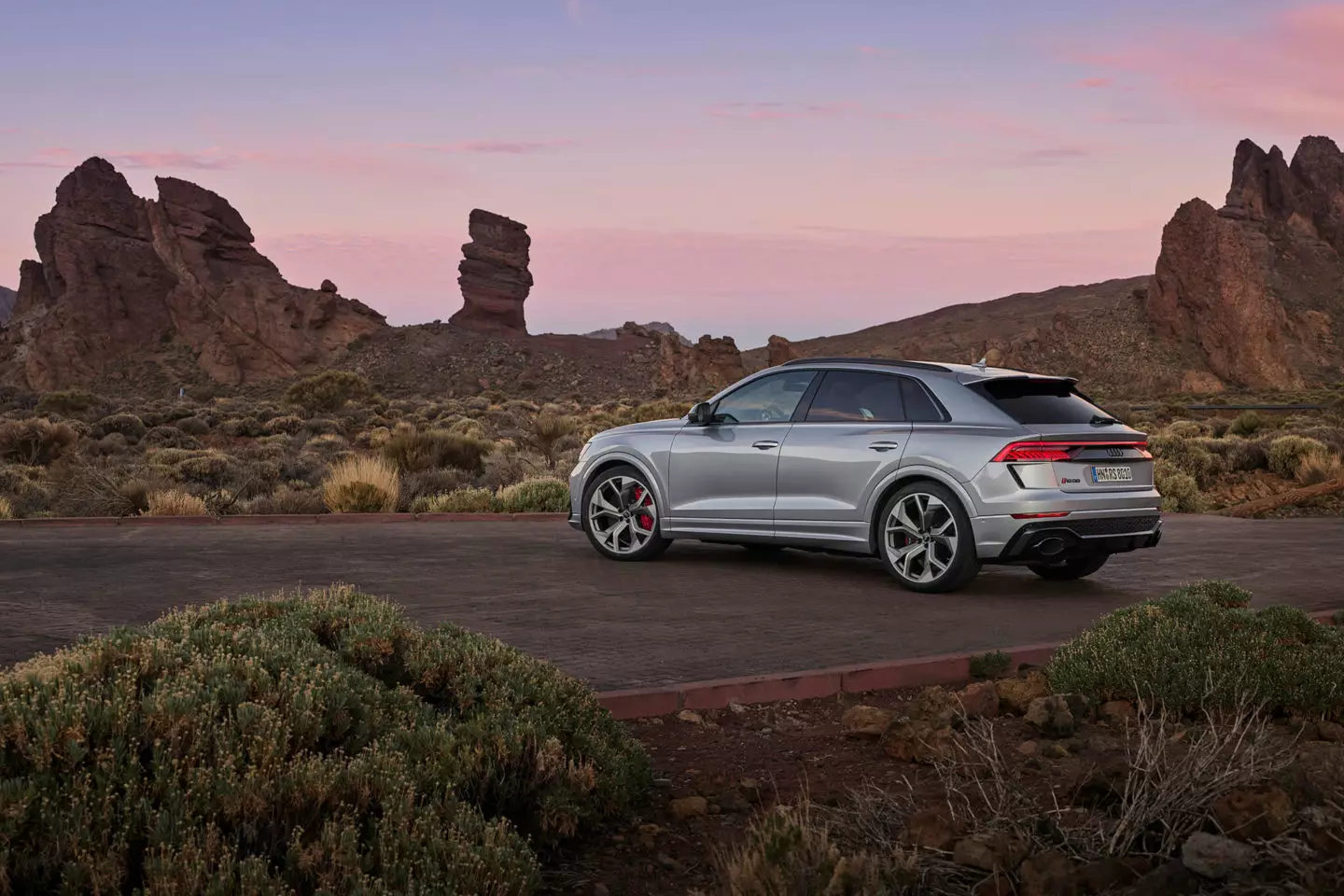
What distinguishes the Audi RS Q8
The Q8 is the first Audi SUV designed from scratch by Marc Lichte and his team, the Germans who succeeded the more conservative design school of Italian Walter De Silva, who reigned for a decade and a half in the German consortium. This was immediately evident in the new, more aggressive octagonal radiator grille with chrome vertical bars that became the common element connecting Audi SUVs.
Compared to the Q7, the sportier proportions of the Q8 result from a height lower by 3.8 cm, a width greater by 2.7 cm and a length 6.6 cm shorter when compared to the Q7, but another determining factor in this The boldest image are the unframed upper doors and the wide, wide rear pillar, which rests on a specially muscled rear section.
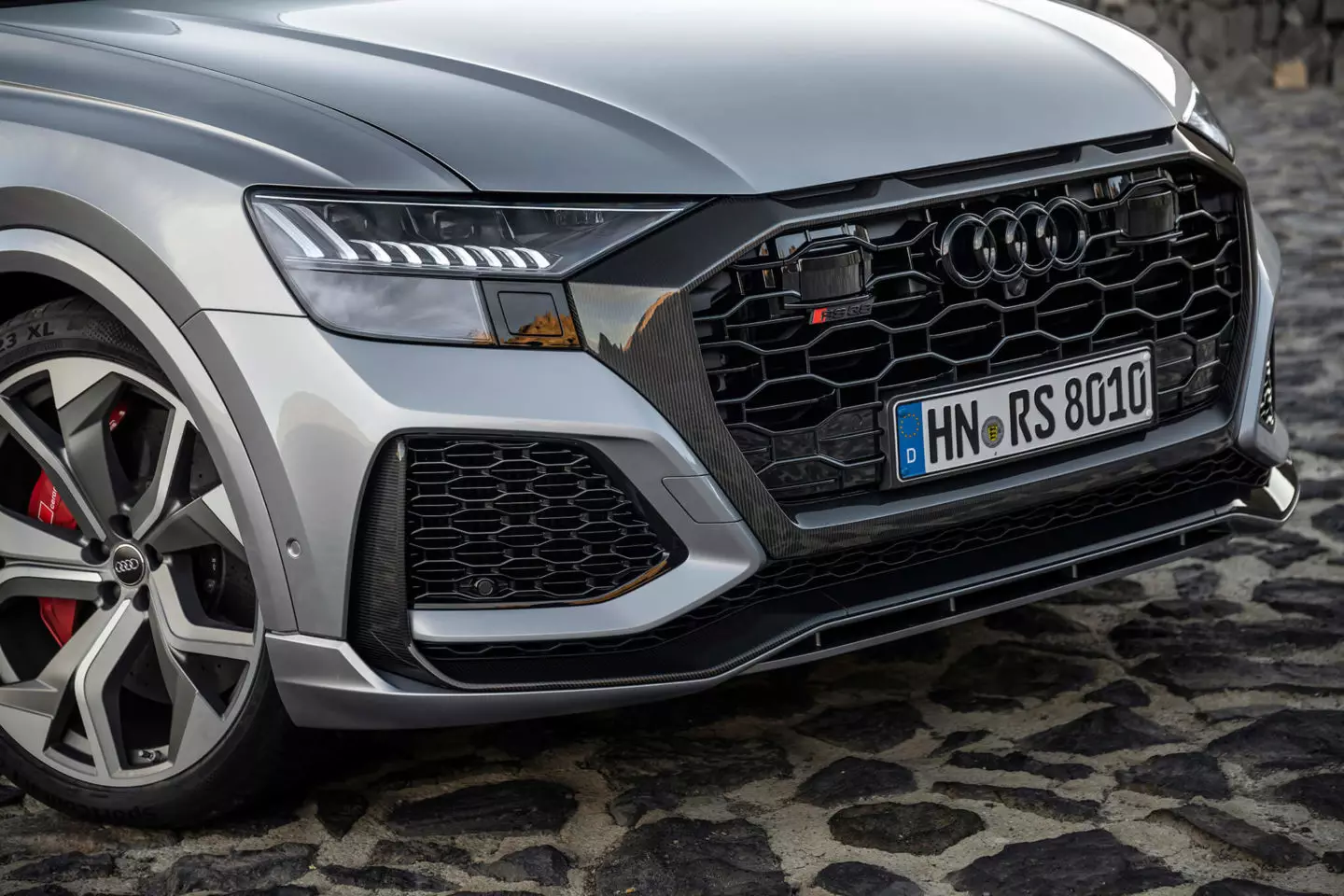
Specific to the Audi RS Q8 are the black lacquered mask throughout the front section, the specific bumpers with larger air intakes and the honeycomb radiator grille, in addition to the matrix LED headlamps tinted, all at the front.
In profile, you can see the widening in the area of the wheel arches (1 cm at the front and 0.5 cm at the back) and the aileron above the rear window, which serves to increase the aerodynamic load in that area. At the back, we see the enlarged and darkened tailpipes and the version-specific diffuser as the main distinguishing elements of the sportiest element of the Q8 family.
Buttons in smaller and smaller numbers
The overall concept and presentation of the dashboard, modeled on the A8/A7 Sportback/Q7, with a modern design, aimed at the driver and radiating quality through every pore. It has three screens, one on the dashboard (12.3”) and two in the center (10.1” on top and 8.6” on the bottom) to manage everything related to infotainment, the one above, and air conditioning, the one below.
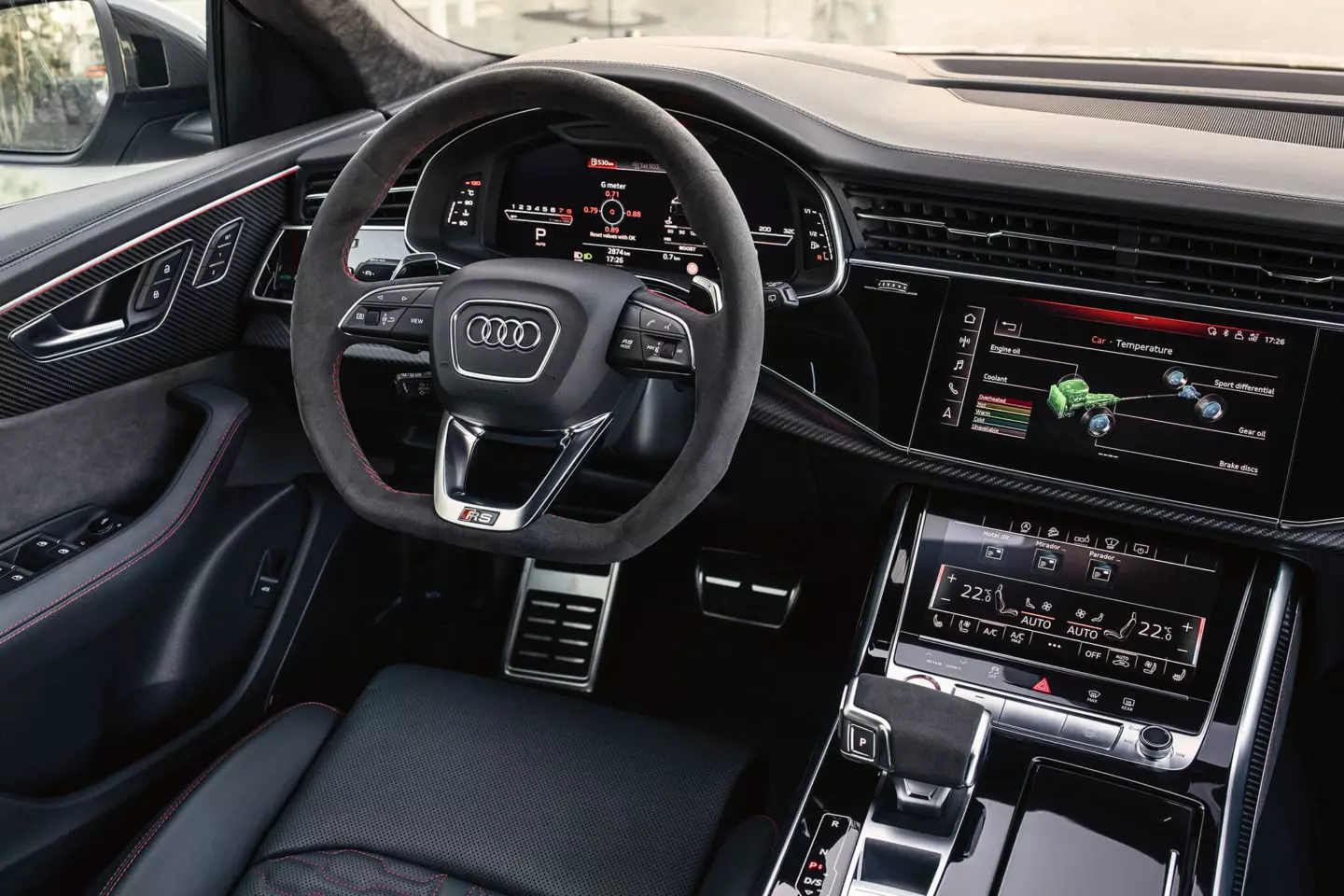
There are almost no buttons and no sign of the joystick control that started being used by BMW about a decade ago (with the 7 Series E65) and which, after being criticized by many, made school in this industry and started to be used , until recently, by virtually all premium brands and even some generalists.
Everything is done by sliding, touching, flicking these two monitors with tablet genes, where almost everything is configurable to make the user experience as special as possible.
Some of the functions are haptic, that is, a tactile correlation of optics and acoustics in response to touch (the adjective derives from the Greek “haptikós”, proper for touching, sensitive to touch). The integration is very well done and Audi's designers explain that a new type of plastic film was used that avoids the unsightly fingerprints we all have to live with on our tablets or even in the newest cars.
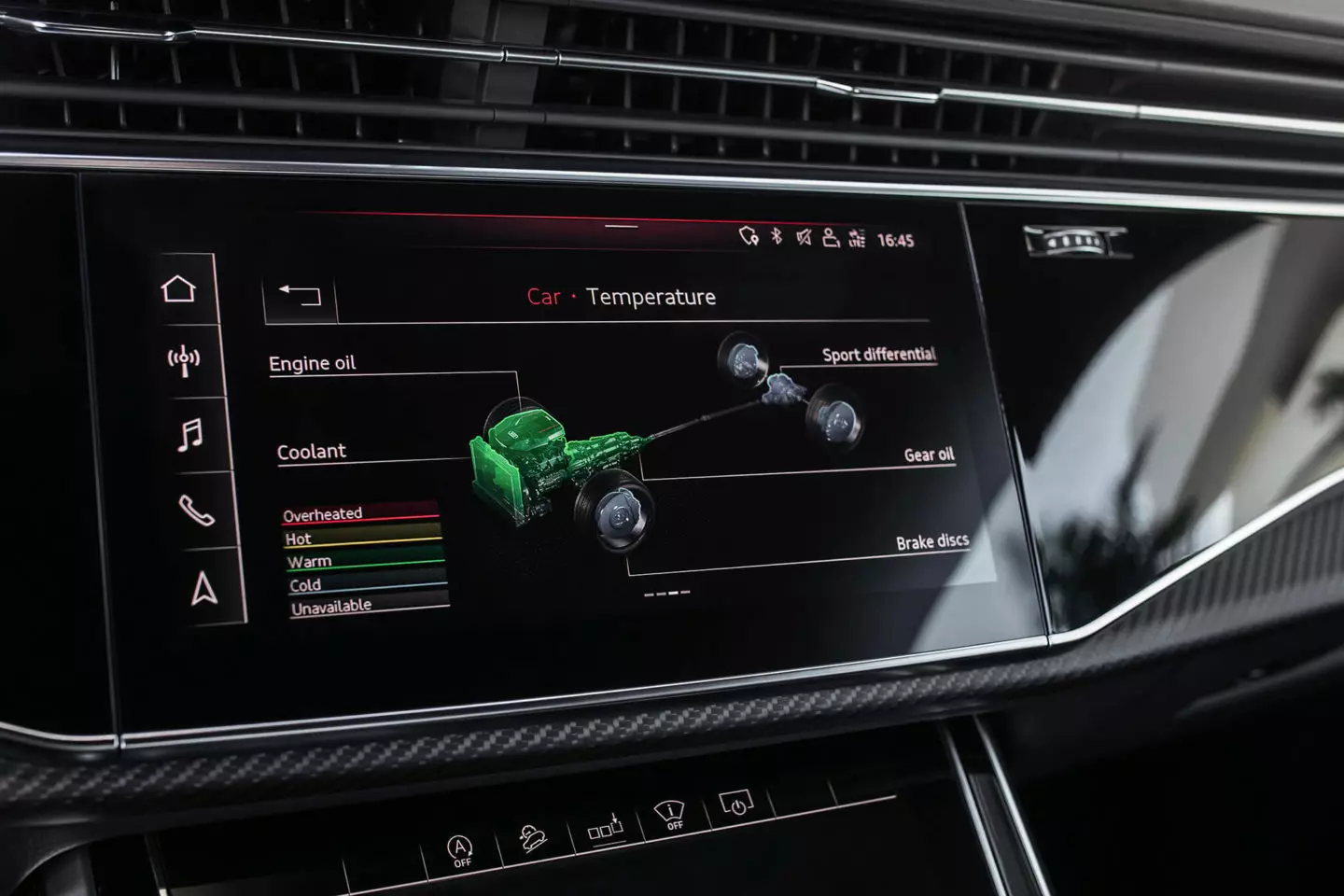
Inside… RS
Here, too, there are marks of the “hot blood” of the Audi RS Q8, such as the excellent sports seats (with reinforced side support) with integral headrests and which can be upholstered in premium leather, with the same alveolar pattern as the grille and the RS logo with inlaid texture on the back. The front ones have heating and cooling, in addition to a massage function performed by 10 pneumatic chambers, with seven programs and three levels of intensity.
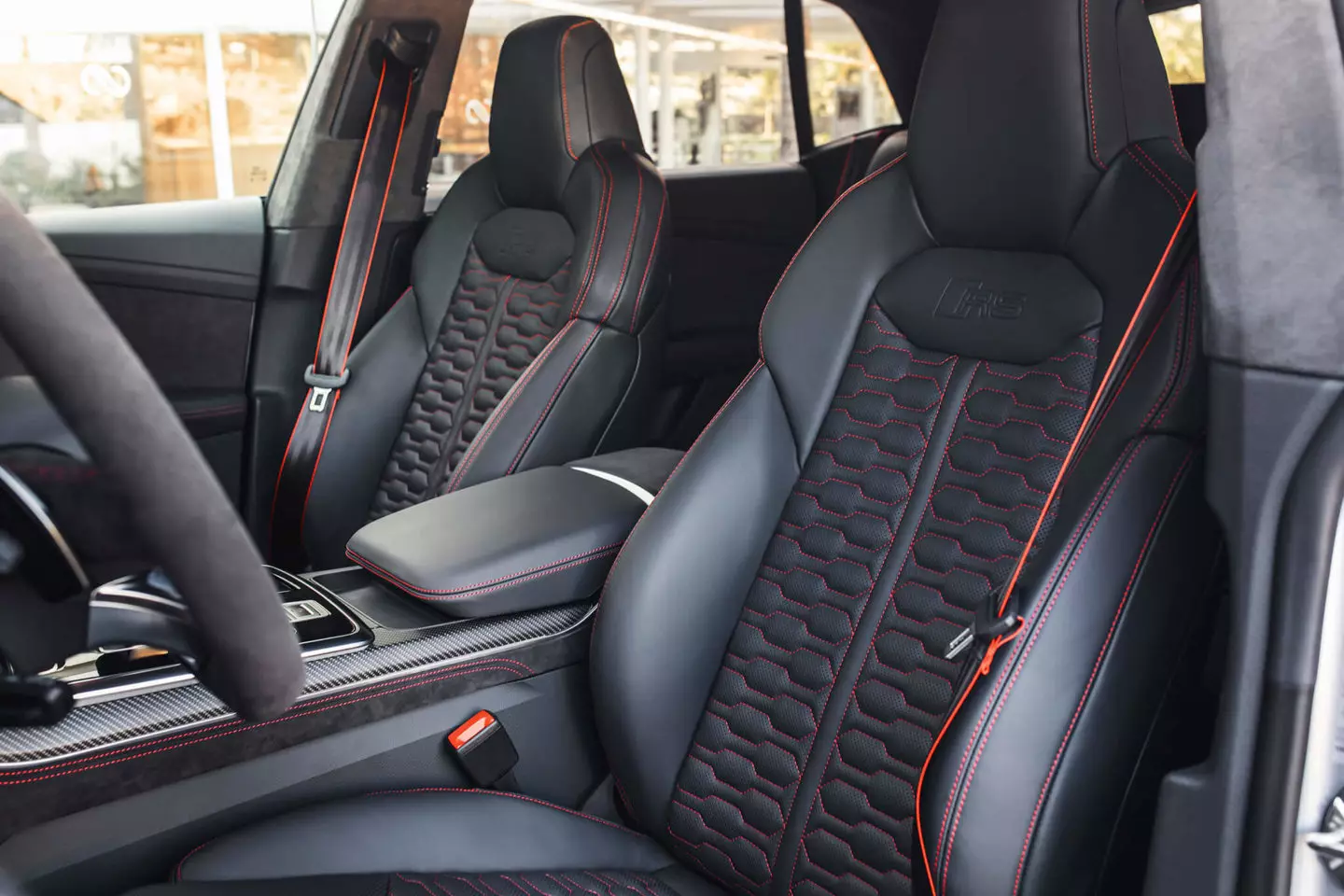
The RS steering wheel has a cut-out bottom section and features an RS button to directly select the more “dramatic” driving modes RS1 and RS2, the second of which has a setting where stability control is turned off. Then we have aluminum or carbon inserts (depending on the package chosen, as is the case on the outside) and the ceiling can have various tones and finishes.
Subscribe to our newsletter
There are also specific menus on this Audi RS Q8 such as those showing the performance of the V8 4.0 twin-turbo engine at all times (a torque and a power indicator), g forces, tire pressure, chronometer with lap times, and there are still a light indicator that alerts the driver when a good time has come to pass the “one up” box.
Space is something that abounds in the rear seats of the new Q8 which, however, could well have an option of two individual seats for a more select trip for four (understandably the Q7 does not allow it, being a more familiar vehicle, but that would go well with the coupé image that Audi wants to stick to the Q8, especially with the RS prefix).
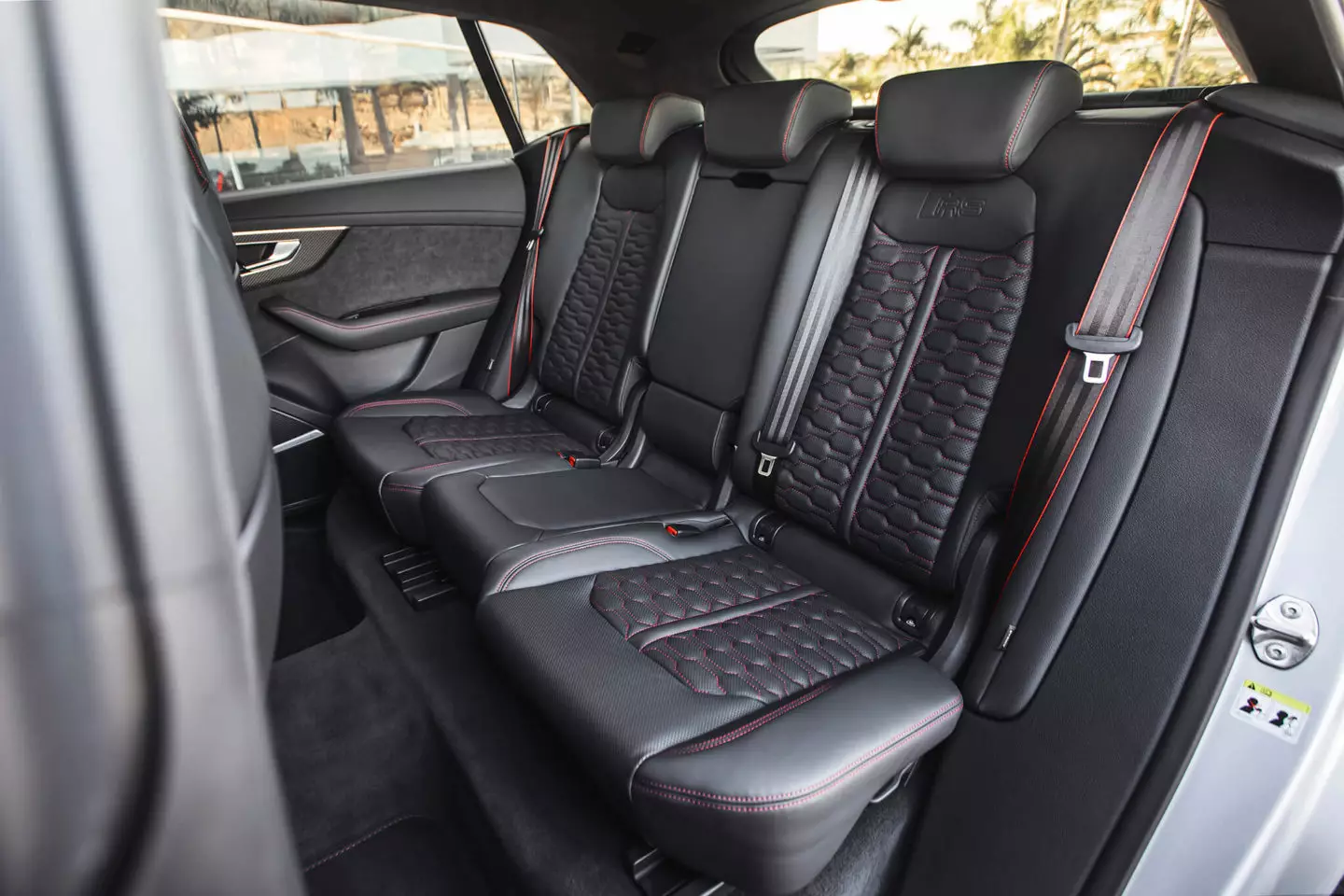
So that it is possible to favor either the space in the luggage compartment or that reserved for rear passengers, the second row of seats is mounted on rails that allow 10 cm to be moved forward or backward in asymmetrical parts, such as the folding.
assistants abound
There are up to four dozen driving assistance systems, as the RS Q8 is equipped with the central driver assistance brain (zFAS), which continuously processes an image of the vehicle's surroundings. It uses a set of sensors which, in the most complete version, includes five radar sensors, a laser scanner, a front camera, four 360º cameras and twelve ultrasonic sensors. Among the many systems are parking assist, adaptive cruise assistance (ACA), assistance at intersections, detect pedestrians and cyclists when we go into reverse, and there is no lack of an advanced towing assistance system.
huge, but it doesn't seem
In line with what happens with the latest models of its premium and sports brands, the Audi RS Q8 is also equipped (as standard) with a directional rear axle as a way to increase its agility, but also the efficiency of handling and even the comfort.
This solution was used in the early 90s of the 20th century by other manufacturers (such as Honda), but the mechanical basis of the systems limited the scope of the ingenious solution, something that is no longer seen today with the growing role of electricity in the automobile. in this third millennium.
The rotation of the rear wheels by five degrees in the opposite direction of the front ones at low speeds makes the Audi RS Q8 much more agile and the proof of this is that its turning diameter is reduced by one meter. From 70 km/h on, the rear wheels rotate 1.5 degrees in the same direction as the front ones, favoring stability on faster roads.
In this sportier Q8 the suspension is always pneumatic with electronically controlled damping with four modes (via the Drive Select selector) varying the height to the ground by a maximum of 90 mm.
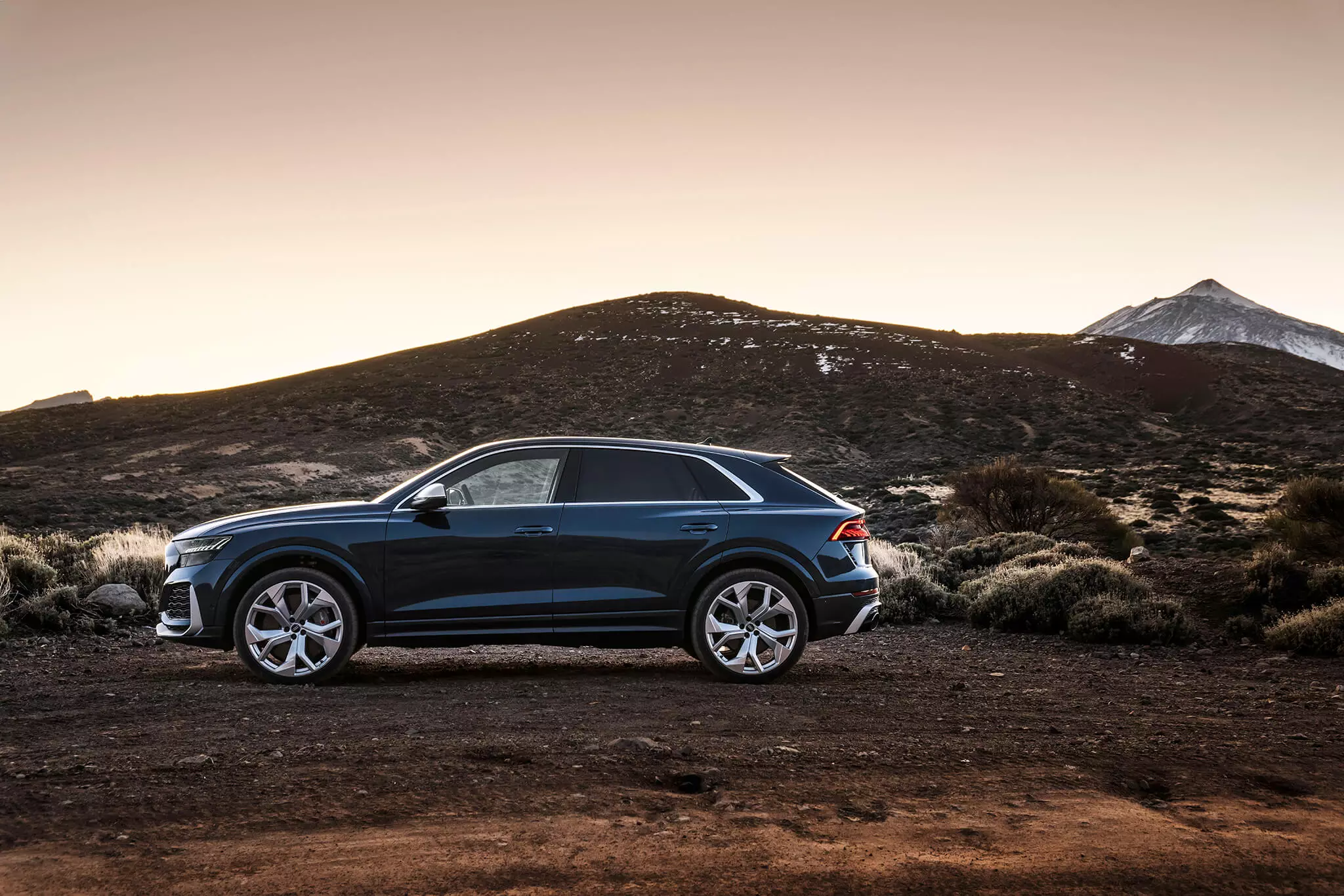
Up to 30 km/h the driver can increase ground clearance by 50 mm, but as the car's speed increases, the suspension automatically lowers in stages, in order to lower the resistance to the passage of air and improve handling efficiency. From 160 km/h (or if Dynamic mode is selected), the Q8 drops 40 mm compared to the entry position and when the SUV is stationary the system can also extend the platform by 65 mm (to help loads and discharges, volumes or occupants).
The quattro traction is permanent and uses a purely mechanical differential, delivering a torque of 40% at the front and 60% at the rear, which can go up to the limits of 70:30 and 15:85 as determined by the grip conditions, the type of floor and the driving itself.
At the wheel
The driving experience of the Audi RS Q8 took place on the volcanic island of Tenerife, mostly on winding roads, relatively narrow, but very well paved. The first observation is that the rolling quality deserves to be praised on any type of floor, even in gravel and with 23" wheels (22" as standard, the biggest ever fitted to an Audi), especially in Comfort mode , which manages to ensure good stability without the car becoming excessively “dry” from reactions.
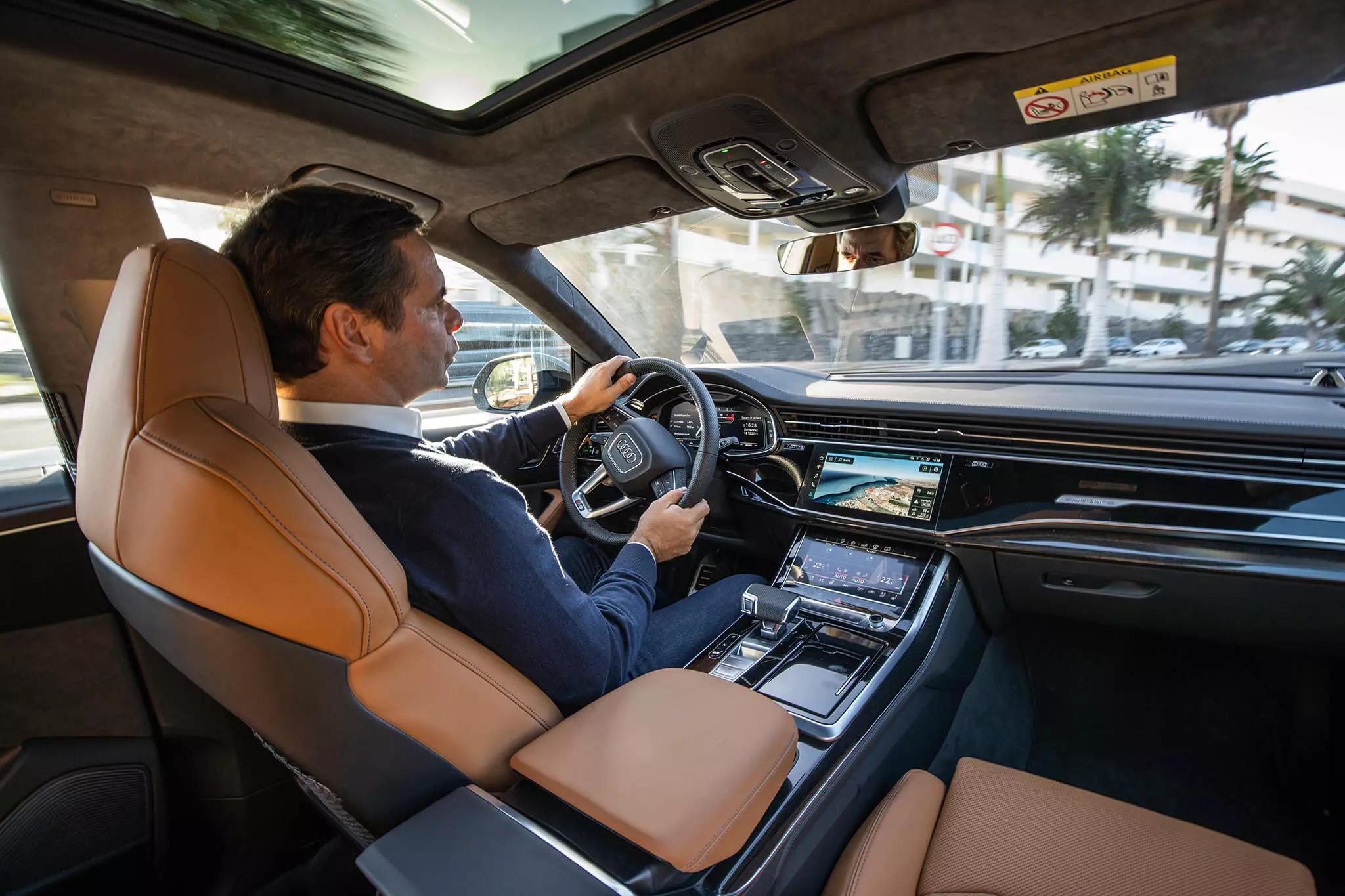
It is a reflection of the good work of the pneumatic suspension that frees the occupants' bones from the irregularities of the floor. And, of course, in the auto mode of the driving programs the damping adapts itself to the driving style and type of road to suit all types of preferences.
There are seven driving modes: Comfort, Auto, Dynamic, Individual, Efficiency, together with two specific modes for off-road driving (allroad and offroad).
When the last one (offroad) is selected, specific stability, traction and braking control programs are activated to steer off the asphalt, while the automatic speed control system is switched on downhill (on descents with an incline greater than The speed of the Audi RS Q8 is maintained at 6% up to a maximum of 30 km/h, this speed being set using the accelerator and brake, allowing the driver to fully concentrate on controlling the car).
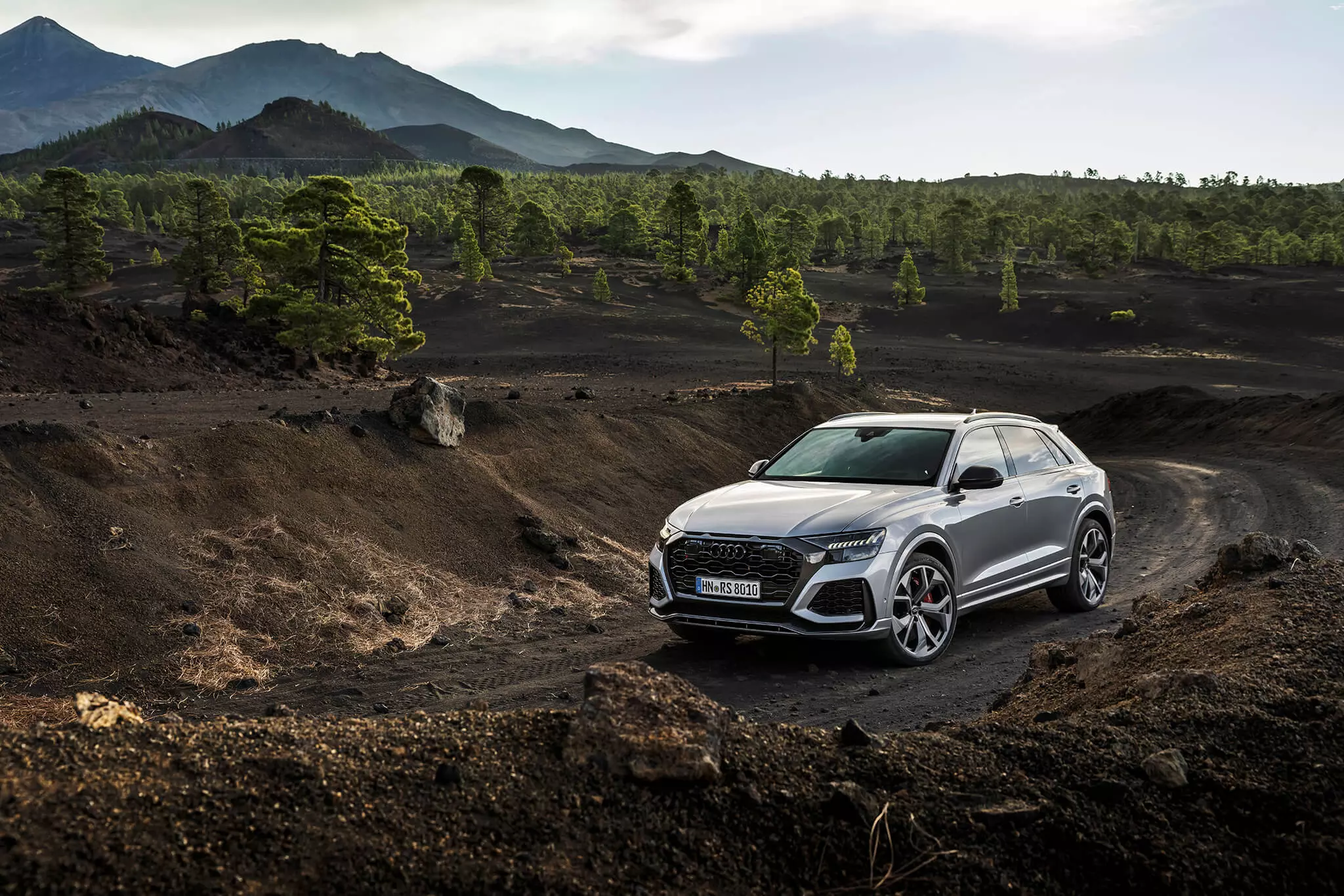
The two preset configurations (RS1 and RS2) are what make the Audi RS Q8 show its teeth in the most aggressive way it is capable of.
Back to the asphalt, the insertion into curves is always done with great composure, to which the permanent four-wheel drive contributes in situations where we adopt more “agitated” rhythms, often invited by the winding road.
The steering (series progressive) pleases because it is precise, heavily assisted (maybe it could “weigh” a little more in Sport) and not make the ground texture reach the arms, in addition to allowing the car to even bend in elbows with reduced amplitude arm movements.
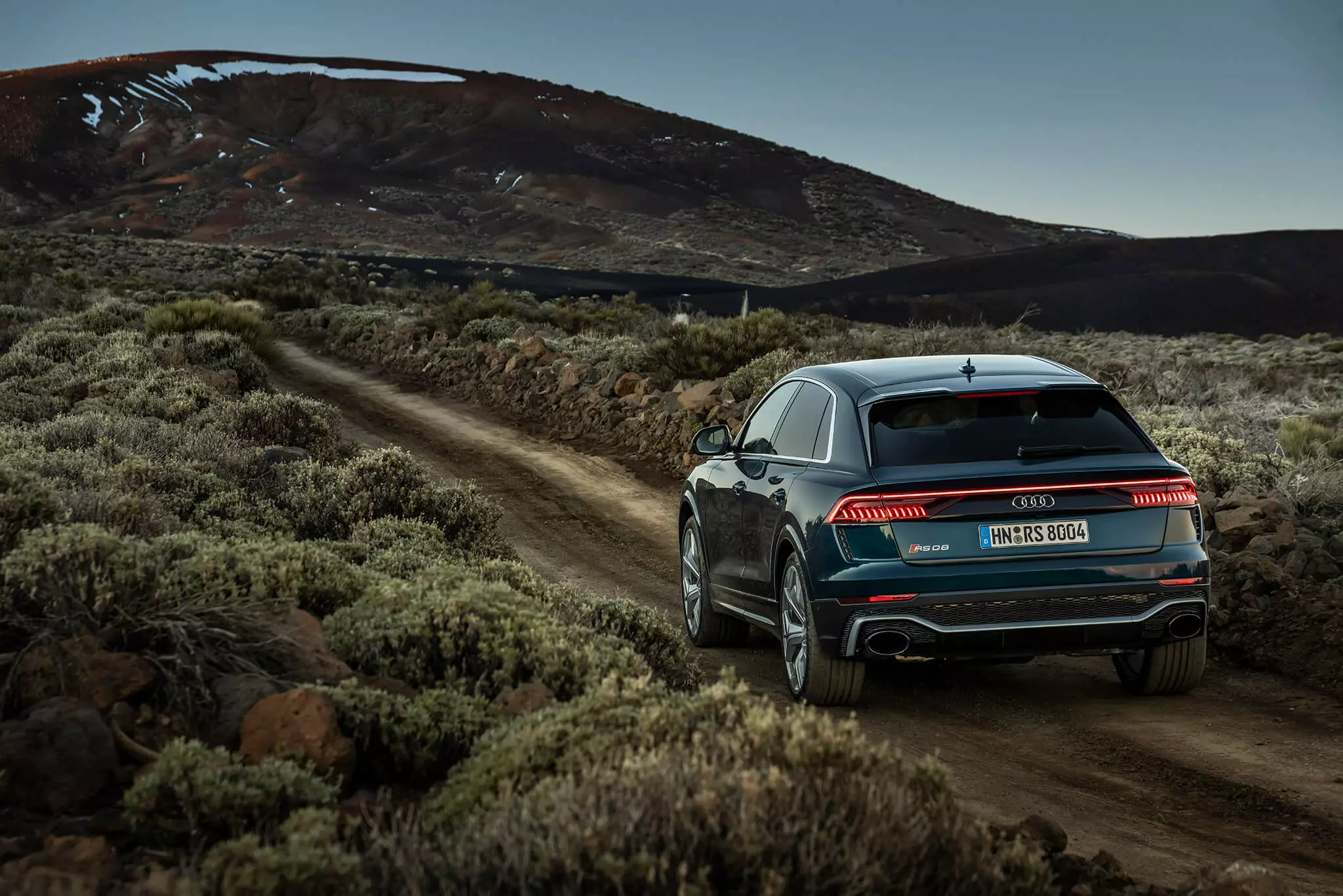
And once again I surrendered to the usefulness of the directional rear axle, which in addition to "shrink" this vehicle of almost five meters in length in urban maneuvers, makes us almost swear that there is a hand on top of the car that makes it run on the its own axis when approaching a curve, however tight it may be, which gives it the agility of a two-segment car below.
Subscribe to our Youtube channel
Chassis to the height…
Of course, in a Q of the RS lineage there is nothing missing and there are several value-added attributes that contribute to making a 2.3 ton block of mass on wheels capable of shooting up to 100 km/h in a short time span of 3 .8 s (or 13.7 s up to 200 km/h and with a soundtrack that also commands respect as long as the most sporting programs are selected) have an exemplary behavior, almost defying the laws of physics, not so far from the that you'd expect to find in an R8 or something.
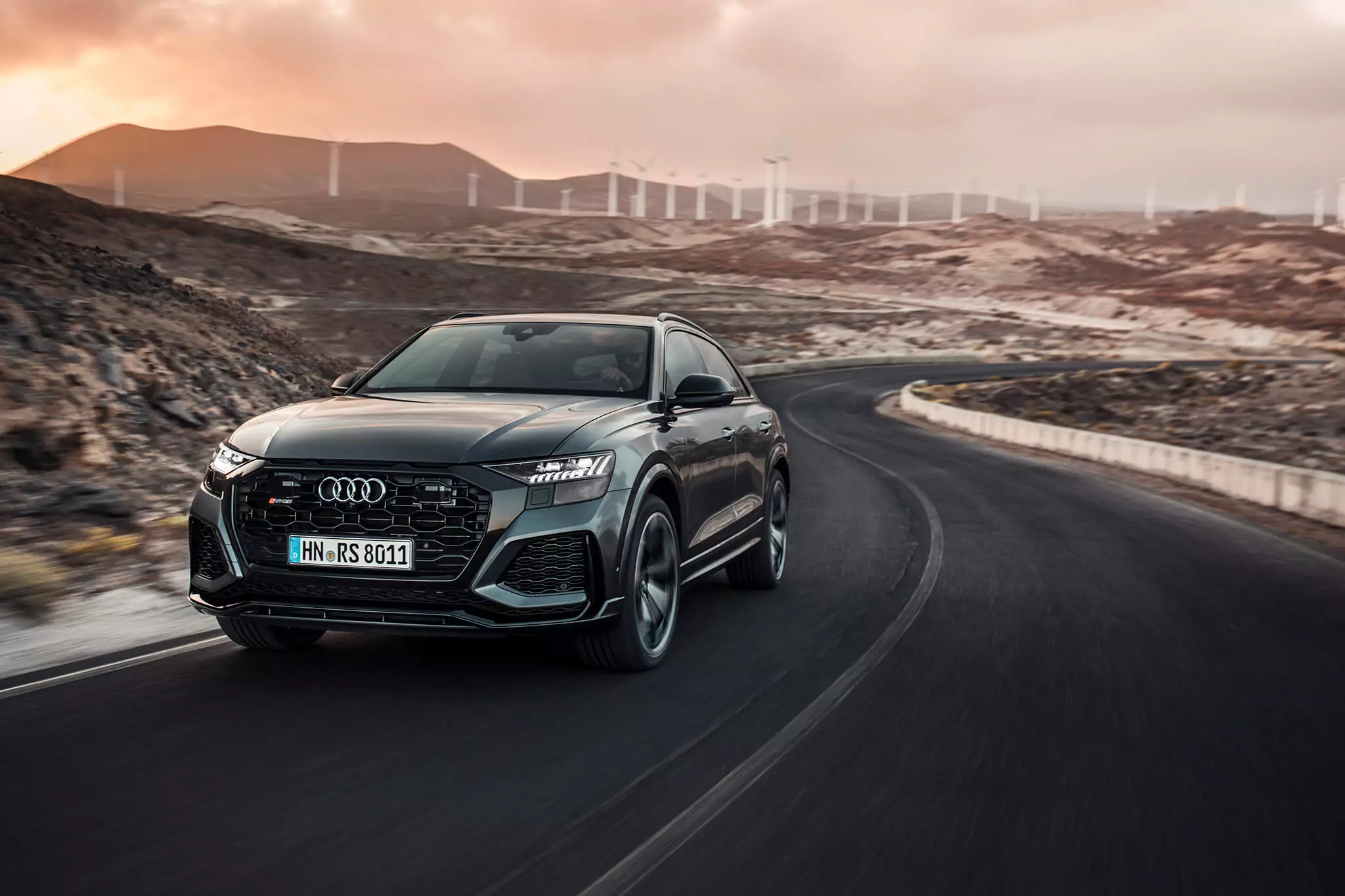
Especially the Dynamic Plus package, which comprises a higher top speed (305 km/h) and a “all-in-one” chassis, which includes the electronic differential on the rear axle, the electromechanical stabilization system and ceramic brakes. Let's do it by steps.
The active stabilizer bar system minimizes body roll over even the fastest corners. A small, compact electric motor between the two halves of the stabilizer bar on each of the two axles makes both halves uncoupled as the car rolls forward, controlling body movement on rough roads and improving comfort, but when cornering, stabilizer element halves rotate in opposite directions, reducing vehicle lean in cornering.
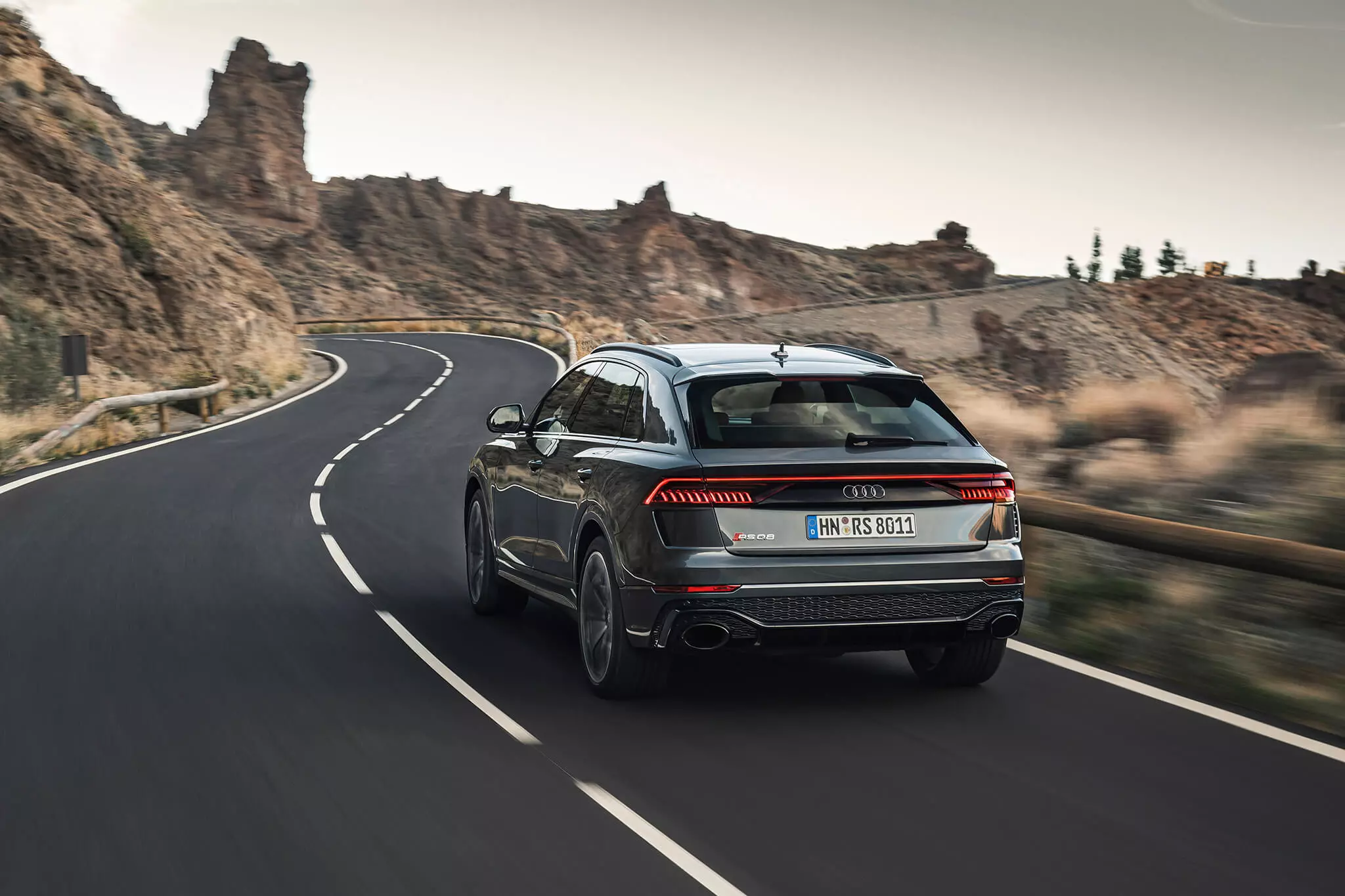
On the other hand, the insertion of the Audi RS Q8 into curves, its ability to maintain mobility and not extend trajectories is enhanced by the electronic differential that transfers torque from one wheel to the other depending on the convenience of each moment.
And finally, ceramic brakes can be dispensed with for the weekly trip to the supermarket or for dropping off or picking up children from school, but here amidst the constant zig-zag frantically descending the mountain of Teide (whose peak is the highest point in Spain , at more than 3700 m) are very useful so that between heavy weight and dizzying accelerations the left pedal does not start to show signs of fatigue (leading the driver to step more and more to a point close to starting to see the tip of the foot making a dent under the bonnet…).
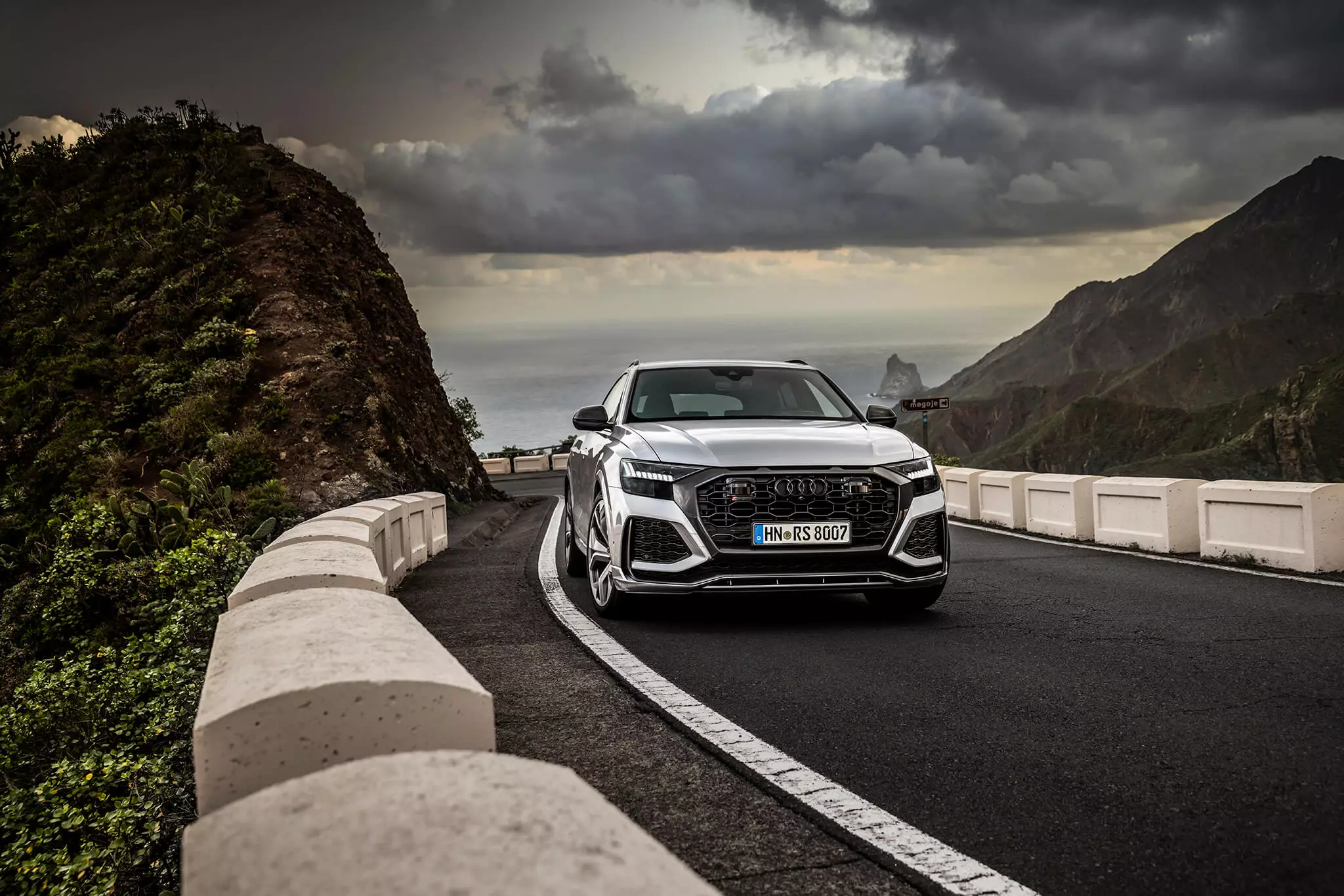
Minus 4 or minus 8 cylinders?
Four of the eight cylinders turn off at low throttle load, but the RS Q8 goes even further, and can even turn off all eight cylinders (freewheeling), thanks to a hybrid system that relies on a 48V electric platform (which is freewheeling). joins the main 12 V) and which also allows powering the entire electronic arsenal that can equip this model. The advantages? The engine starts much more smoothly and extends the "zero emissions" periods (from 55 to 160 km/h and for a maximum of 40s), in addition to making the stop/start system active from 22 km/h (previously only from 7 km/h). The consumption reduction is 0.7 l/100 km, but even so, real consumption below 18 l/100 km can hardly be expected.
… and the ATM too
The eight-speed automatic transmission manages to extract the best that the engine has to give. The maximum torque of 800 Nm only “appears” at 2250 rpm, which is a little late, but around 1900 the driver can already count on around 700 Nm under the right foot.
In any case, in sudden power/torque needs it is always possible to kick the right pedal so that the kickdown function will throw the engine to higher revs (or do it manually by using the paddles on the steering wheel or the gear selector in the position manual).
Also worth mentioning is the “coasting” program, which means that the stabilized speed of this Audi RS Q8 moves by its own inertia (switching off the engine), with the resulting reduction in consumption (see box) that makes the RS Q8 a “smooth” hybrid ” (semi-hybrid or mild-hybrid). Another demonstration of the two faces that the top of the range Q8 can show: relatively comfortable, moderately silent and contained in consumption and emissions, or undisturbed in behavior, noisy as a bear waking up from three months of hibernation and wasteful/pollutant to the point of become the target of the wrath of environmentalists.
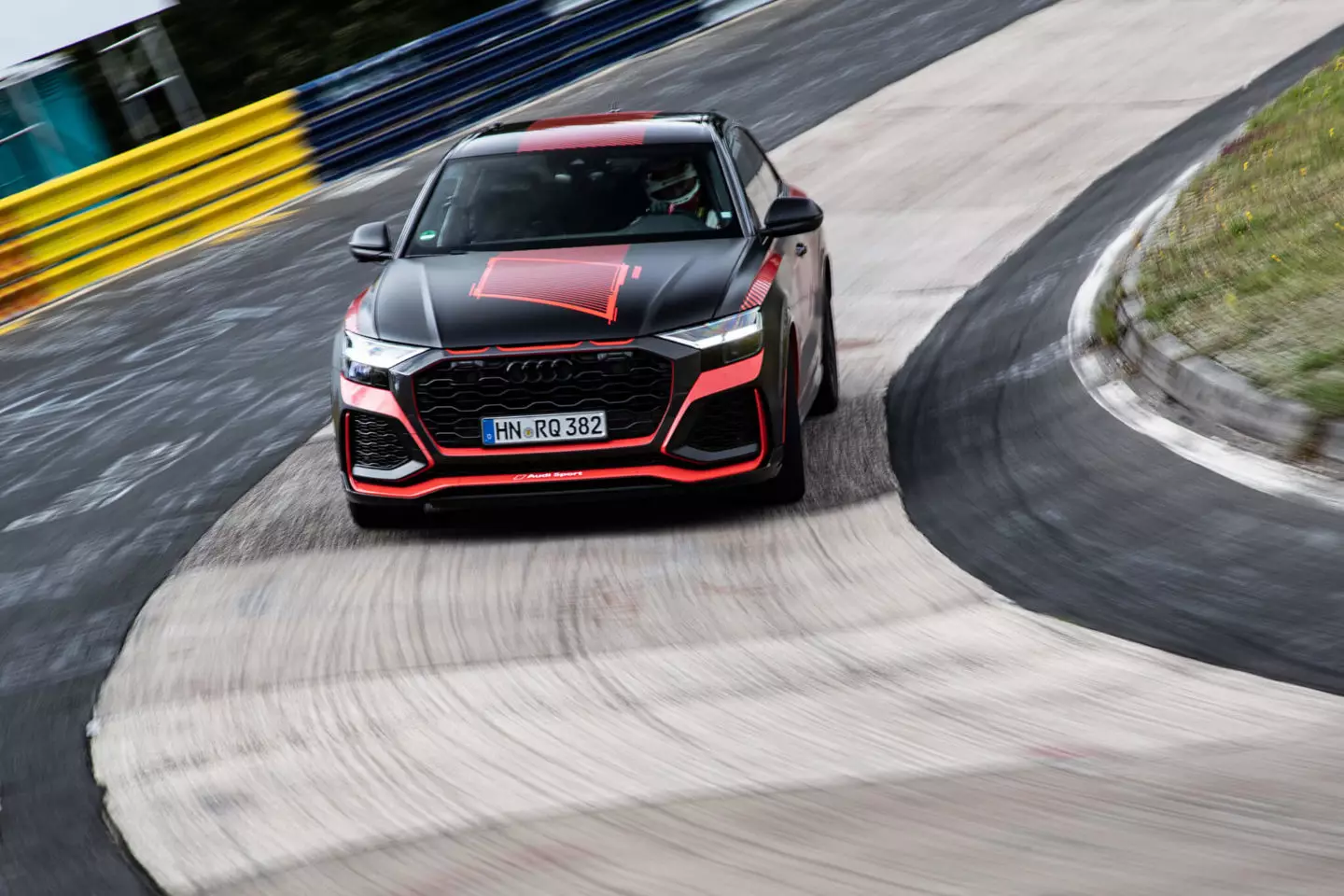
The Audi RS Q8 became the fastest SUV on the Nürburgring, with a time of 7min42s.
